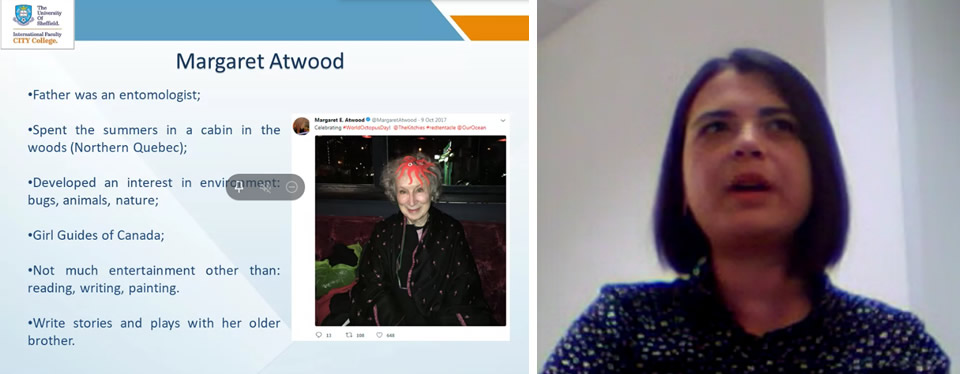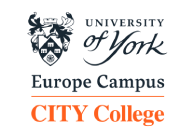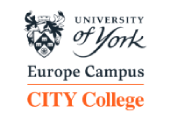The English Studies Department encounters Margaret Atwood
The new academic year finds us resuming classes in a familiar and yet altered reality due to the Covid-19 pandemic. The Personal and Professional Development Seminar series offered by the English Studies Department similarly resumed but in an online capacity. Launching the series in the Autumn 2020-21 semester on Tuesday, 20th October 2020, is Dr Filio Chasioti’s seminar titled: “It was dark inside the Wolf”: Margaret Atwood and her Worlds demonstrating not only an intriguing approach and insight to Atwood but also raising awareness towards this oscillating sense of the familiar and the ability to defamiliarize.

As expected from any avid fan but even more so from an avid researcher, Dr Chasioti initially introduces and provides context to the author, Margaret Atwood, whom most of us probably know due to the TV series adaptation The Handmaid’s Tale (2017-). She establishes thematic areas that Atwood’s short stories and novels touch upon such as social realism, historical fiction, dystopian novels and – as Atwood has characterized them – ustopian novels.
Drawing on Atwood’s MasterClass on writing, Dr Chasioti utilizes the phrase “It was dark inside the Wolf” not only to remind us of the well-known fairytale Little Red-Riding Hood but even more so to point out the different perspectives from which a story can be told that could defamiliarize us from what we already think we know. This element of focalization segues the topic towards the focus of the seminar, the MaddAddam trilogy (Oryx and Crake (2003); The Year of the Flood (2009); MaddAddam (2013); a series that delves into areas such as the ‘ethics’ of science, corporate exploitation of resources, exploitation of the environment and ‘ecological utopianism’, post-humanism, role of spirituality ultimately deeming the series a ‘coming-of-age’ story of the speculative dystopian/ustopian genre.
Dr Chasioti highlights some prevailing features in the series, namely multiple focalizers, different narrators, intertexts and the significance of memory. What is noticeable, according to Dr Chasioti, is that at a narrative level, readers are constantly estranged through multiple viewpoints, different timelines, unreliable narration, quality of memories, while at a textual level Atwood presents some unique and intriguing elements the style and function of which permits her to make the story active.
In other words, Dr Chasioti highlights the ability of the author to intertwine narrative and textual style to such a degree that makes the story mutable, makes the reading experience of it (and not solely the adaptation audio-visual experience) even more unique and invites one to consider if the dystopia evident in the novel series ( as well as in other stories Atwood has created) is indeed “only” dark or if there is, as Atwood tends to stress, light and hope in dystopias/ustopias.
It is no secret that dystopian fiction and apocalyptic, or post-apocalyptic texts are trending or may be over-marketed. What is encouraging, though, is to see how certain authors, like Atwood, challenge us as readers to reconsider and re-evaluate not only the genre(s), the stories/narratives but also the textual components that reveal how they are told thus potentially revealing that ‘silver-lining’, that element of ustopia.








